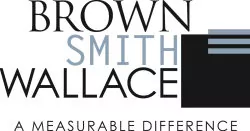Research by the Financial Accounting Standards Board (FASB) has shown that analysts and investors care more about the existence of goodwill impairment than a precise calculation of what the impairment amount is attributable to. So, on November 30, 2016, the FASB finalized its plan to simplify the measurement of goodwill impairment. This complex calculation sometimes requires businesses to hire valuation experts to calculate an objective measure of fair value. The changes would go live for fiscal periods starting after December 15, 2019, for public companies and for fiscal periods starting after December 15, 2020, for privately held businesses.
Understanding Impairment
When one business buys another at a price that's more than the combined fair value of the acquired business's tangible assets and identifiable intangibles, the buyer records the premium on its balance sheet as "goodwill." Goodwill generally includes the reputation of the purchased business or its competitive advantage in the market.
Accounting Standards Codification Topic 350, Intangibles — Goodwill and Other, requires public companies to test for declines in the value of acquired goodwill at least once a year. When there's a drop in value, companies generally record goodwill impairment. An impairment usually signals to analysts that a company overpaid for a new acquisition, which could lead to problems in the future.
Private Companies Have More Options for Reporting Goodwill
In 2014, the Financial Accounting Standards Board (FASB) finalized two alternative reporting options for private companies that acquire goodwill in business combinations:
- Accounting Standards Update (ASU) No. 2014-02, Intangibles — Goodwill and Other (Topic 350): Accounting for Goodwill. Under this alternative, private companies may elect to amortize goodwill over a period not to exceed 10 years, rather than test it annually for impairment.
- ASU 2014-18, Business Combinations (Topic 805): Accounting for Identifiable Intangible Assets in a Business Combination. This alternative exempts private companies from recognizing certain hard-to-value intangible assets — such as noncompetes and certain customer-related intangibles — when they buy or merge with another company. Instead, these hard-to-value intangibles are combined with goodwill on the balance sheet. The alternative reporting method doesn't eliminate the requirement under GAAP to recognize and separately value other intangible assets acquired in business combinations, such as trade names and patents, however.
When these alternatives were originally issued, companies that didn't elect an alternative on or before its effective date were required to assess the "preferability" of the alternative as described in Accounting Standards Codification Topic 250, Accounting Changes and Error Corrections.
ASU 2016-03, Intangibles — Goodwill and Other (Topic 350), Business Combinations (Topic 805), Consolidation (Topic 810), Derivatives and Hedging (Topic 815): Effective Date and Transition Guidance, removes the effective dates from the private company reporting alternatives. It also exempts private companies from having to make a preferability assessment if they adopt one of these accounting alternatives.
Comparing Existing and New Rules
Under the existing rules, calculating goodwill impairment is a two-step process. First, businesses must figure out whether an impairment exists, and then they must put a dollar figure on it.
The second step includes determining the implied fair value of goodwill and comparing it with the carrying amount of goodwill on the balance sheet. In computing the implied fair value of goodwill, a business must determine the fair value of its assets and liabilities as of the impairment testing date. This procedure is similar to what would be required in a purchase price allocation for an acquired business.
The FASB has agreed to nix the second step of calculating impairment. Instead, a business will perform its annual goodwill impairment test by simply comparing the fair value of a reporting unit with its carrying amount. Put simply, the impairment charge would equal the difference between the carrying amount and its fair value. Although the new rules simplify the reporting requirements, most companies will still need to hire valuation professionals to estimate fair value.
Debating the Issue
The FASB's vote to approve Proposed Accounting Standards Update (ASU) No. 2016-230, Intangibles — Goodwill and Other (Topic 350): Simplifying the Accounting for Goodwill Impairment, was split 4-3. Board members who voted in favor of the changes argued that the second step requires a lot of work, but yields little useful information.
FASB member Harold Schroeder voted against approving the proposal, however. "I would emphasize the fact that I don't think it's a simplification or an improvement when you run into situations where you could actually misidentify an impairment," Schroeder said. "By eliminating Step Two you actually increase the cost, collectively to the system, by having misinformation in the marketplace."
FASB member Lawrence Smith said he would dissent from the update's issuance because he wants to retain the second step as an option for some companies. Several banks and insurance companies told the FASB that they didn't feel comfortable scrapping the second step entirely. Specifically, they contend that the second step sometimes offers a more precise measure of the goodwill impairment, particularly in cases where changes in interest rates could give financial statement readers the impression that goodwill impairment was significant.
If you have questions about reporting goodwill impairment, contact Dan Ward, Principal, Audit Services, at 314.983.1237 or dward@bswllc.com with any questions.
The content of this article is intended to provide a general guide to the subject matter. Specialist advice should be sought about your specific circumstances.

